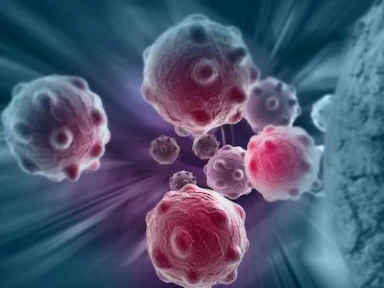MRD FAQs

What is MRD?
MRD describes the low level of malignant cells that persist in the bone marrow after treatment but cannot be detected with conventional outcome measures and which eventually lead to relapse. A patient who is MRD negative has achieved clinical remission with the absence of aberrant clonal cells by NGF or NGS per at least 100,000 nucleated cells.1,2
How does MRD- compare to other clinical endpoints?
Studies have shown MRD- as an important measurement for depth of response, acting as a surrogate marker for longer PFS and OS. Studies have also demonstrated that the prognostic value of MRD- is superior to CR for PFS and OS across the disease spectrum, regardless of treatment or a patient's risk profile.1,3,4
Has MRD- been studied in clinical trials?
MRD- has been studied in clinical trials evaluating response rates in NDMM and RRMM. MRD- has been associated with significantly improved PFS.3
Many of my patients with multiple myeloma are high risk. Can they achieve MRD- as well?
Studies have demonstrated that patients with high-risk cytogenetics can achieve MRD- and that this depth of response is associated with improved rates of OS and PFS, similar to standard-risk populations.1,5
Data support that MRD- can be used to inform treatment decisions regardless of a patient’s risk profile or disease stage.4
Should I consider MRD when making treatment decisions?
As ongoing clinical trials consider MRD- as an exclusive or additional primary endpoint, MRD- may eventually be used to guide treatment decisions.1,6
Even among patients who have achieved a CR, assessing MRD and finding a treatment that can help more patients achieve MRD- is increasingly important.4,8
CR=complete response; MRD=minimal residual disease; MRD-=minimal residual disease negativity; NDMM=newly diagnosed multiple myeloma; NGF=next-generation flow; NGS=next-generation sequencing; OS=overall survival; PFS=progression-free survival; RRMM=relapsed and/or refractory multiple myeloma.
- Kostopoulos IV, Ntanasis-Stathopoulos I, Gavriatopoulou M, Tsitsilonis OE, Terpos E. Minimal residual disease in multiple myeloma: current landscape and future applications with immunotherapeutic approaches. Front Oncol. 2020;10:860.
- Kumar S, Paiva B, Anderson KC, et al. International Myeloma Working Group consensus criteria for response and minimal residual disease assessment in multiple myeloma. Lancet Oncol. 2016;17(8):e328-e346.
- Munshi NC, Avet-Loiseau H, Anderson KC, et al. A large meta-analysis establishes the role of MRD negativity in long-term survival outcomes in patients with multiple myeloma. Blood Adv. 2020;4(23):5988-5999.
- Lahuerta J-J, Paiva B, Vidriales M-B, et al. Depth of response in multiple myeloma: a pooled analysis of three PETHEMA/GEM clinical trials. J Clin Oncol. 2017;35(25):2900-2910.
- Goicoechea I, Puig N, Cedena M-T, et al. Deep MRD profiling defines outcome and unveils different modes of treatment resistance in standard- and high-risk myeloma. Blood. 2021;137(1):49-60.
- Landgren O, Iskander K. Modern multiple myeloma therapy: deep, sustained treatment response and good clinical outcomes. J Intern Med. 2017;281(4):365-382.
- Munshi NC, Avet-Loiseau H, Rawstron AC, et al. Association of minimal residual disease with superior survival outcomes in patients with multiple myeloma: a meta-analysis. JAMA Oncol. 2017;3(1):28-35.
- Martinez-Lopez J, Wong SW, Shah N, et al. Clinical value of measurable residual disease testing for assessing depth, duration, and direction of response in multiple myeloma. Blood Adv. 2020;4(14):3295-3301.



